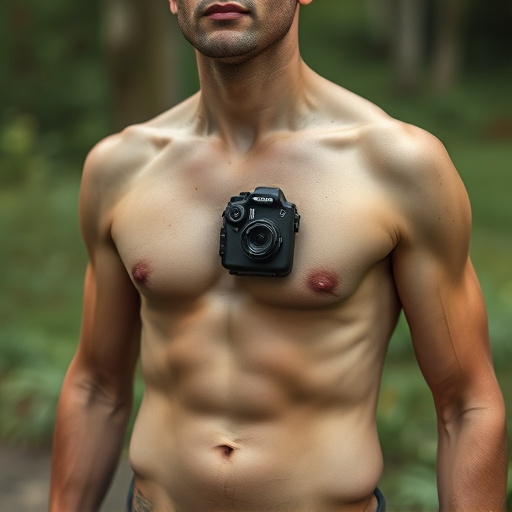Hidden personal body cameras, attached to clothing or accessories, offer individuals portable video recording with advanced privacy features for self-defense, surveillance, and evidence capture. While popular for personal safety and legal documentation, these devices present legal challenges in regions where surreptitious recording without consent may violate privacy laws. Users must understand local regulations, comply with data protection rules, and consider exceptions to consent rules for news reporting or non-intrusive activities. These cameras gain popularity due to their discreet high-quality video recording capabilities, especially valuable in scenarios like personal safety incidents, wildlife encounters, or high-risk environments.
Uncover the power of hidden personal body cameras—discreet devices that capture unseen moments. This comprehensive guide explores the world of hidden cameras, delving into their technical aspects, legal landscape, and diverse applications. From enhancing personal safety to documenting evidence, these cameras offer a unique perspective.
We’ll navigate the intricacies, discussing privacy concerns, legal implications, and the growing popularity of this technology. Whether for self-defense, surveillance, or creative pursuits, hidden personal body cameras are transforming how we record and perceive our surroundings.
Understanding Hidden Personal Body Cameras: A Comprehensive Overview
Hidden personal body cameras, also known as wearable surveillance devices, offer individuals discreet and portable video recording capabilities. These compact cameras can be attached to clothing or accessories, allowing users to capture high-quality videos from their perspective. With advanced technology, these devices provide an unprecedented level of privacy and security.
The rise in popularity of hidden personal body cameras is driven by various factors, including personal safety concerns, legal protections, and the desire for evidence in everyday situations. Whether used for self-defense, surveillance, or documentation, these cameras offer a unique vantage point, enabling users to capture detailed footage while remaining unseen themselves. This technology has evolved significantly, integrating advanced features such as motion activation, night vision, and water resistance, making them versatile tools for various applications.
Legal and Privacy Considerations for Wearing a Hidden Camera
Wearing a hidden personal body camera raises significant legal and privacy considerations that must be carefully navigated. In many jurisdictions, recording others without their knowledge or consent can constitute a violation of privacy laws. Even if it’s your own body-worn camera, understanding local regulations is crucial to avoid potential legal repercussions.
The use of these devices can blur the lines between personal documentation and public surveillance, especially in places where individuals expect privacy, like homes or certain public areas. It’s essential to be aware of exceptions to consent requirements, such as when capturing footage in a public space for news reporting or if your actions are not intrusive. Always ensure you’re complying with data protection regulations regarding storage, sharing, and deletion of recorded content to safeguard personal information and maintain transparency.
Benefits and Use Cases of a Discreet Video Recording Device
A hidden personal body camera offers a range of benefits and use cases that make it an increasingly popular choice for individuals seeking discretion and evidence capture. Its primary advantage lies in its ability to record high-quality video secretly, allowing users to document various situations without being noticed. This is particularly valuable in scenarios where transparency or potential legal implications are concerns, such as personal safety, surveillance, or professional investigations.
For example, these devices can be employed by individuals who frequently engage in activities that may require evidence of their experiences. Hikers, for instance, can use them to document encounters with wildlife or dangerous terrain. Similarly, people working in high-risk environments like construction sites or law enforcement could rely on hidden cameras to capture interactions or incidents, ensuring accountability and providing crucial evidence in case of disputes or investigations. The versatility of a hidden personal body camera makes it an indispensable tool for anyone needing discreet video recording capabilities.
